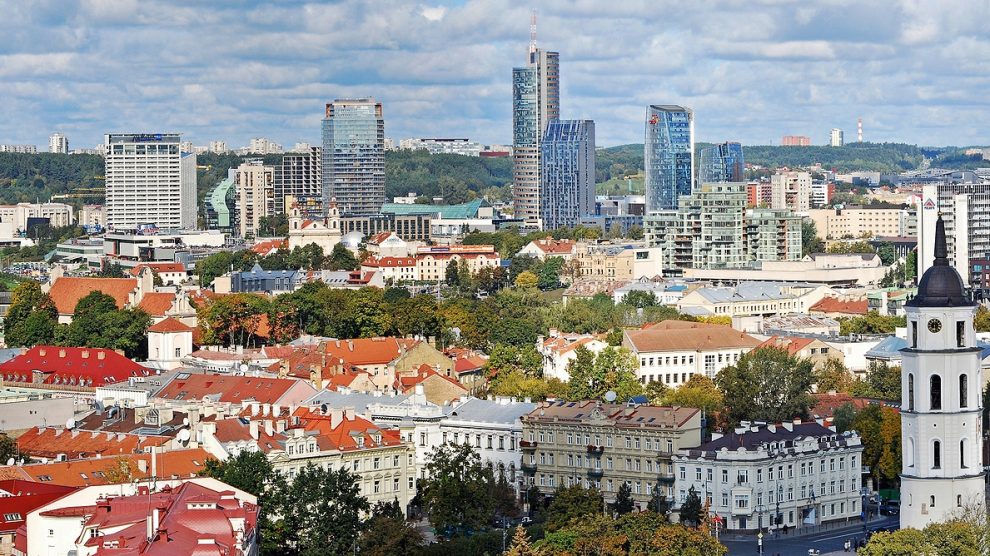By cleverly focusing on sectors with a high level of global exposure, such as fintech and film production, the Lithuanian capital Vilnius remains firmly in the sights of international location experts.
An international panel of FDI experts, site selection advisors and location analysts has selected Vilnius, the capital of Lithuania, as emerging Europe’s most business-friendly city for the second consecutive year.
The city, an increasingly important hub for the European fintech and mobility sectors (amongst much else), easily won out over second-placed Warsaw, the capital of the region’s biggest economy, Poland, receiving 176 mentions from our panel of experts compared to 151 for Warsaw in Emerging Europe’s Business-Friendly City Perception Index.
- CEE’s EU members need innovation for a new growth model
- Once considered peripheral, CEE has become integral to the EU’s economic wellbeing
- The emergence of CEE as a global investor
Prague, the capital of Czechia, this year takes third. Prague has been in the leading three spots since Emerging Europe first published the index in 2020.
The index provides a comprehensive look at the business environment of the cities of Central and Eastern Europe, the Caucasus, and the Baltics.
The panel of experts evaluates cities across eight distinct categories: brand; economic potential; business climate; pool of talent; smart city development; infrastructure and connectivity; quality of life; local authority support.
Emerging Europe does not expect members of the panel to have worked with, nor have extensive knowledge of, all the locations included in the survey. Indeed, due to a lack of any international promotional activities some locations are unknown to most of the respondents.
The aim of this exercise is therefore to understand how they see certain emerging Europe cities and their value proposition.
“That Vilnius is once again perceived by our experts as being the region’s most business-friendly city really is no surprise,” says Craig Turp-Balazs, Emerging Europe’s editor. “It leads in five of the eight categories (brand, economic potential, smart city development, quality of life, and local authority support), and features in the top 10 of the others.”
Turp-Balazs believes that the Lithuanian capital does a very good job of promoting its key attributes internationally, making clever use of various media channels in order to do so.
“Its focus on some key, high-profile sectors, such as fintech and film production, also means that it is likely to feature prominently when location experts are asked to select those cities they associate with business-friendly practices,” he suggests.
This year, for the second time in a row, our researchers divided the cities into two groups: established cities and emerging cities.
The 90 established cities are those in the region with a population of 200,000 or more, as well as capital cities—even in cases (such as Podgorica) where the population is below 200,000. The 78 emerging cities meanwhile, often referred to as ‘tier-three cities’, all have a population of between 100,000 and 200,000.
Among the emerging cities, Plzeň in Czechia came out top, followed by Burgas in Bulgaria and the Lithuanian port of Klaipėda.
A different perspective: Geospatial analysis
This year’s perception ranking has been enriched for the first time by a wealth of geospatial analysis. The idea behind this new subindex is to provide an objective numerical dimension for each city and allow for comparison among them.
The geospatial analysis is based on the script-based collection of several features from OpenStreetMap, the open-source alternative to Google Maps. These include metrics such as the number of office buildings in a city, the amount of green space, and proximity to transport infrastructure.
Of the established cities, Brno in Czechia came out on top, followed by two Slovakian cities: Bratislava and Košice.
Interestingly, perception champion Vilnius ranks only 26th in the geospatial index. The reasons for the big difference (which also applies to many other cities—Warsaw is only 22nd in the geospatial analysis) are several, suggests Bohdan Kostiv, Emerging Europe’s senior data analyst.
“First of all, the geospatial index includes only six categories compared to eight in the main index, due to the fact that categories such as brand and local authority support are impossible to measure from map data,” he says.
“Secondly, the geospatial index ranks categories per capita (for example, the number of bank or office buildings in the city, divided by the latest available population of a given city). This is not the case for the main index, where the absolute number of mentions of the city by respondents is taken as an indicator.
“Thirdly, there might be bias in both the perception of respondents (who might overestimate some aspects of the city while underestimating others), and objective indicators from the geospatial analysis.”
Among emerging cities, Šiauliai, another city in Lithuania, takes first place, ahead of Olomouc in Czechia and Toruń in Poland.
Plzeň, top of the emerging cities perception index, ranks sixth.
Copies of the full Emerging Europe report, Business-Friendly Cities 2024, can be downloaded here.
Unlike many news and information platforms, Emerging Europe is free to read, and always will be. There is no paywall here. We are independent, not affiliated with nor representing any political party or business organisation. We want the very best for emerging Europe, nothing more, nothing less. Your support will help us continue to spread the word about this amazing region.
You can contribute here. Thank you.



Add Comment